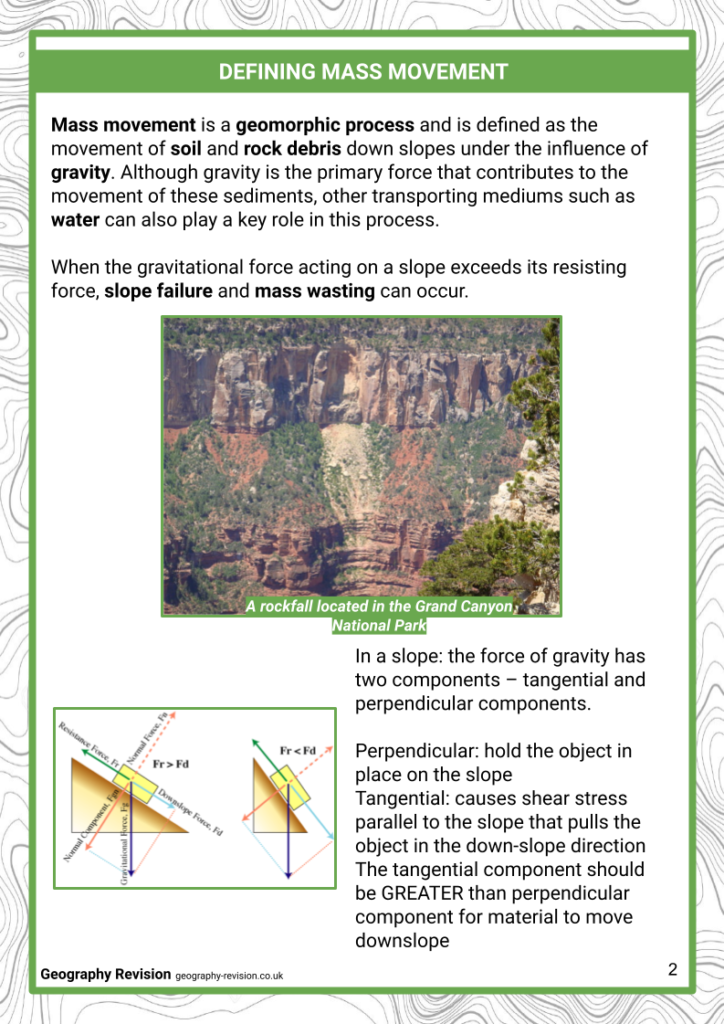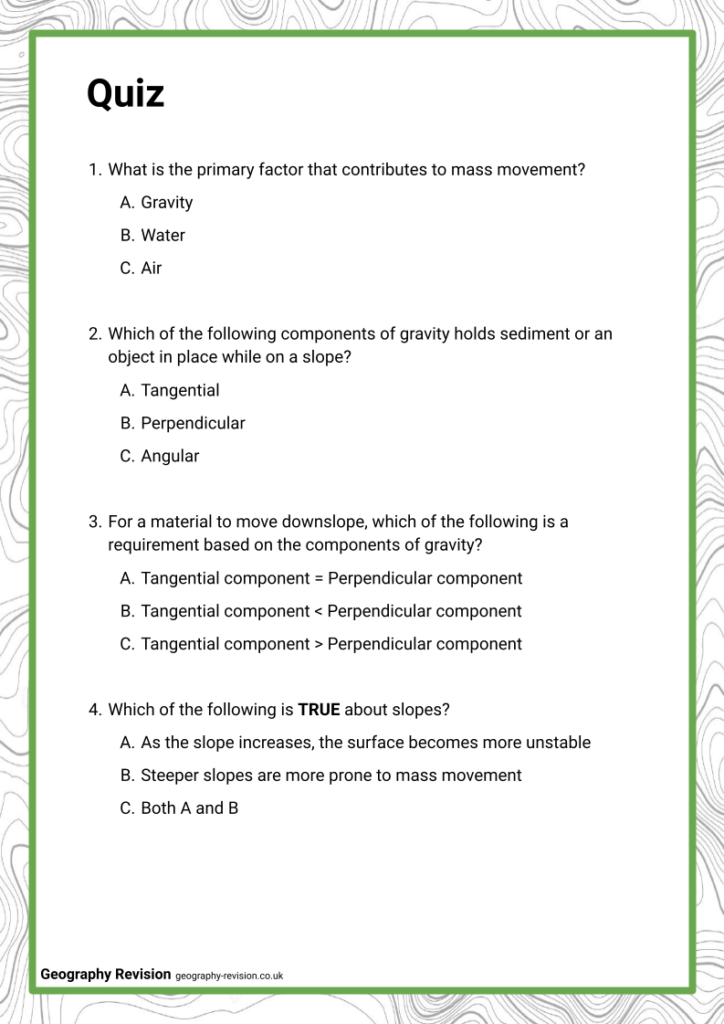Download the Introduction to Mass Movement Module
This module contains:
- An editable PowerPoint lesson presentation
- Editable revision handouts
- A glossary that covers the key terminologies of the module
- Topic mindmaps for visualising the key concepts
- Printable flashcards to help students engage active recall
- A quiz with an answer key to test knowledge and understanding of the module

Mass Movement: Introduction
Mass movement is a geomorphic process and is defined as the movement of soil and rock debris down slopes under the influence of gravity. Although gravity is the primary force that contributes to the movement of these sediments, other transporting mediums such as water can also play a key role in this process. When the gravitational force acting on a slope exceeds its resisting force, slope failure and mass wasting can occur.
This A-Level Mass Movement module will enable students to:
- Define what mass movement is
- Identify the different types of mass movement and their examples
- Identify hazards that result from mass movements
- Describe the relationship between mass movement hazards and tectonic hazards
- Identify the factors that contribute to mass movement hazards
- Explain how mass movement hazards can be mitigated
- Describe how weathering and erosion are related to mass movement
- Examine a case study of the 1959 Madison Canyon Landslide
More Natural Hazards Modules
Mass Movement is one lesson in our Natural Hazards module. The other theory lessons can be found below:
Volcanic Hazards
Fire Hazards




